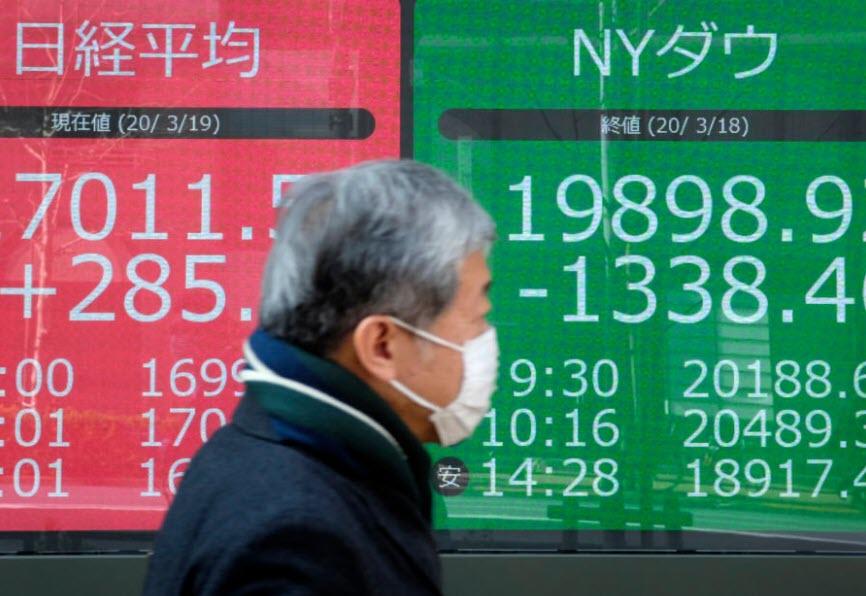Financial markets have experienced the fastest ever crash over the past few weeks. Even during the dotcom bust and the Lehman crisis, stocks did not fall this quickly. In less than a month, we have seen major indices fall almost 30%, and stocks in sectors such as oil and travel down by 80%. We are experiencing terrifying daily declines not seen since the 1929 stock market crash that preceded the Great Depression.
We are at a watershed moment: the coronavirus Covid-19 is a catalyst fast bringing many long simmering problems to the boil. It is exposing the creaking financial systems around us and it will change the way economies function. Economic and financial pundits, however, have been focusing almost exclusively on the short-term effects of coronavirus and so are missing the much bigger themes at play.
Epidemiologists tell us that when it comes to the virus, we are looking at a once in a century event. It is highly contagious and highly lethal. Experts are not comparing Covid-19 to SARS or Swine Flu, but to the Spanish influenza of 1918 that killed between 50 and 100 million people worldwide.
We do not have good data on what the stock market did during the 1918 flu, but we do know that it led to a severe recession. The connection between influenza and recessions is well documented. Going as far back as the Russian flu in 1889-90, the Spanish flu in 1918, the Asian flu in 1957-58 and the Hong Kong flu of 1968-69 — they all led to recessions. This one will be no different.
But this recession will not only be driven by the economic loss of able-bodied workers, it will be helped along too by the steps political leaders take to avoid the spread of the coronavirus. In medicine, the immune system’s response can often be worse than the disease. When the body goes into septic shock, the immune system overreacts, releasing what doctors refer to as a cytokine flood, which can reduce blood to vital organs and lead to death. Sepsis is common and kills more than 10 million people a year. Today, the political reaction to Covid-19 is causing something akin to a septic shock to the global economy.
The recession is likely to be very sharp but brief. Recessions are self-regulating. De-stocking of shelves and warehouses leads to re-stocking. Collapsing low interest rates and oil prices eventually spur spending and borrowing. Government spending and central bank easing eventually feed through to the real economy. While there will be massive panic and bankruptcies today, there is little doubt that markets will be better in a year, and certainly will be in two to three years,
But the structural changes to how our economy operates, however, will be felt for decades to come. And this is in large part because we didn’t learn the lessons of the last crash.
Over the years since the 2008 crisis, central banks have been trying to stamp out every single small fire that flares up (the European crisis in 2011-12, the Chinese slowdown in 2015-16, the slowdown last year); but suppressing volatility and risk only creates bigger fires. Risk is like energy and cannot be destroyed. It can only be transformed.
Forest fires are a useful analogy. California has infrequent, devastating forest fires; the Mexican state of Baja California has many small frequent fires and almost no major catastrophic fires. Both states have a similar climate and vegetation, yet they have vastly different outcomes. That’s because when there are very few small fires, underbrush grows, vegetation increases and creates greater kindling for the next fire. Suppressing small risks only makes them emerge eventually as very big ones.
In politics and economics, massive change events tend to happen not in orderly sequences, but in sudden spasms, like the Arab Spring, or the collapse of the Eastern Bloc. Watching events unfold is often like watching sand grains pile slowly on top of one another until a final, random grain causes the entire pile to collapse. People knew the Arab countries were fragile and that the Eastern Bloc might eventually fall, but predicting which grain of sand would do it precipitate either was impossible.
Physicists call these transitions critical thresholds. Critical thresholds are everywhere in nature. Water at moderate temperatures is disorganised and free-flowing, yet at a given critical value, it has an abrupt transition to a solid. It’s the same with the sandpile: one grain too many can trigger collapse — but which one?
In 1987 Per Bak, Chao Tang, and Kurt Wiesenfeld found that while sandpiles may be individually unpredictable, they all behave the same way. The critical finding of their experiments was that the distribution of sand avalanches obeys a mathematical power law: The frequency of avalanches is inversely proportional to their size. Much like forest fires, the less frequent they are, the more catastrophic they are.
It’s the same with financial markets and the economy. We will experience years of quiet, interrupted by sudden avalanche. Years of slowly adding grains of sand can end abruptly — to our great surprise. Today in financial markets, many unsustainable trends have been building, and the coronavirus is merely the grain of sand that has tipped the sandpile...
- Source, Unherd, read the full article here
